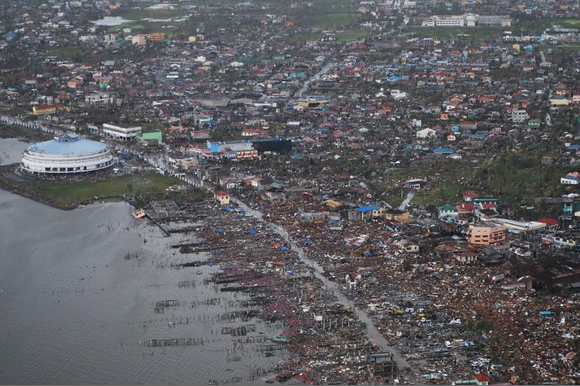“It’s like trying to squeeze an orange through a straw,” says a senior US administration official working on aid relief for the ravaged Philippines city of Tacloban. He was referring to fact that until yesterday, all overland routes to the city were impassable. The only way to get aid in and people out was through a small airport that sustained heavy damages. A steady stream of military aircraft were rotating through the airport, one by one.
Things are getting somewhat better. As of yesterday, an overland route was cleared. The aid that is only trickling in will soon start to flow, and a full humanitarian response can take place. The senior administration official says the situation will likely turn the corner today, as larger volumes of aid begins to reach people.
The needs are enormous. The latest Situation Report from OCHA revises upward by about two million the number of people affected by the storm, to 11.5 million. That is about one in ten people in the Philippines. The number of displaced is about 544,000. The numbers could increase as more information comes in from storm affected rural areas.
The challenges in the days and weeks ahead are enormous. These kinds of storms have a way of spreading diseases like cholera. Sanitation systems need to be rebuilt. The breakdown of law and order leads to opportunism by some nefarious actors, increasing threats and violence against women.
In the coming days, we will probably see big financial contributions to the relief effort by traditional donors, including the United States, Europe, Japan and the Scandinavian countries. Right now, agencies are mostly self-funding with the expectation that their operations will be sustained through future grants from these donors. These agencies need a collective $300 million to mount a full emergency response. In the coming days we will know the extent of the generosity of the international community as pledges are announced. This will be a key variable in whether or not this response can be sustained.
